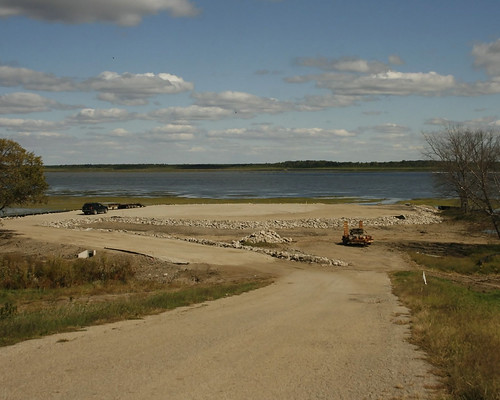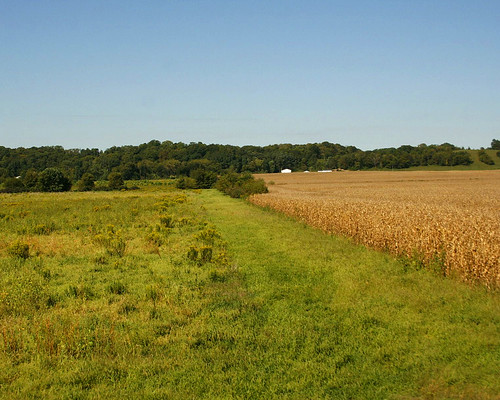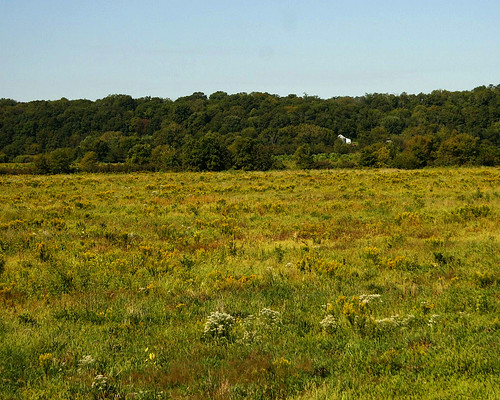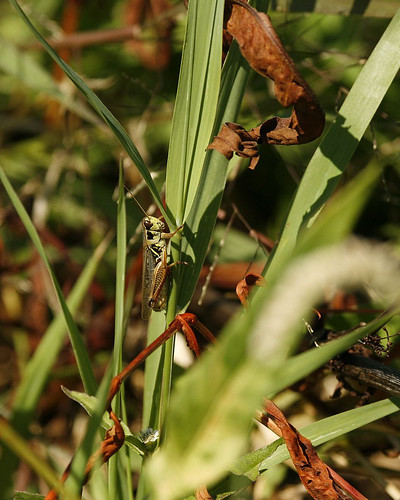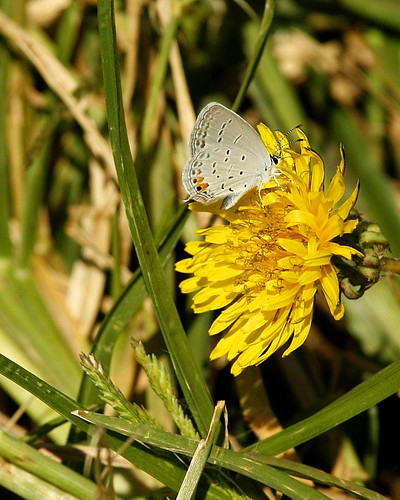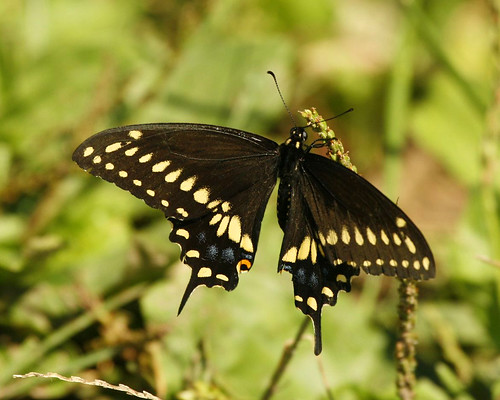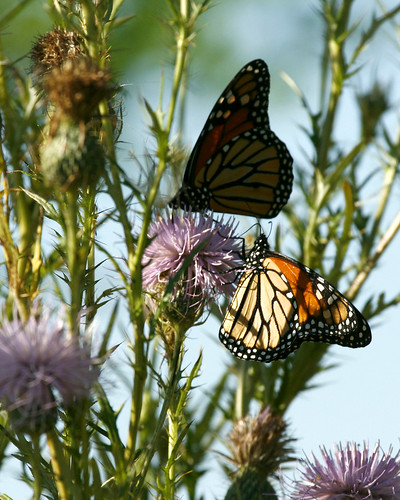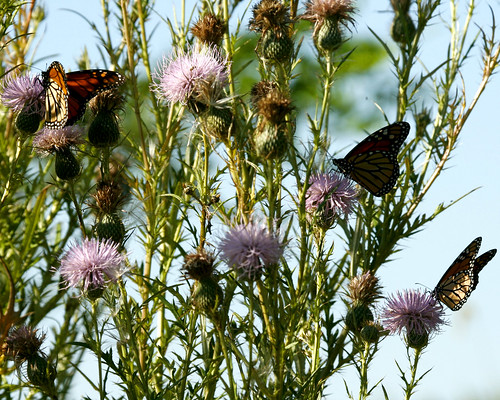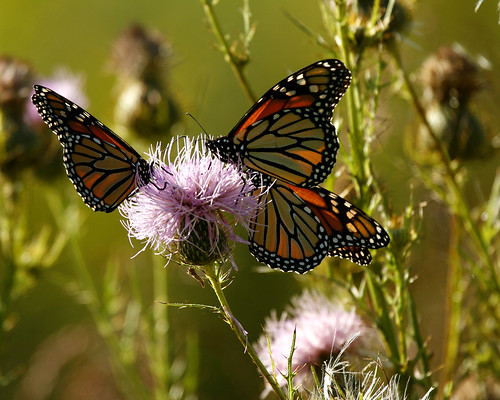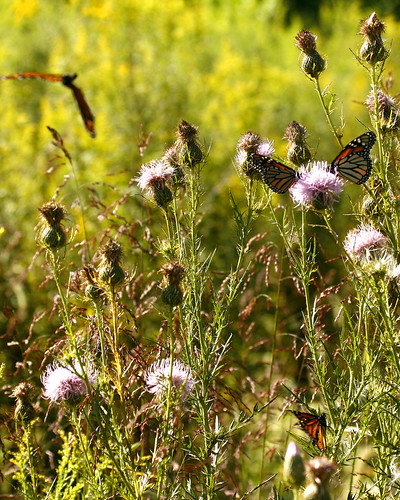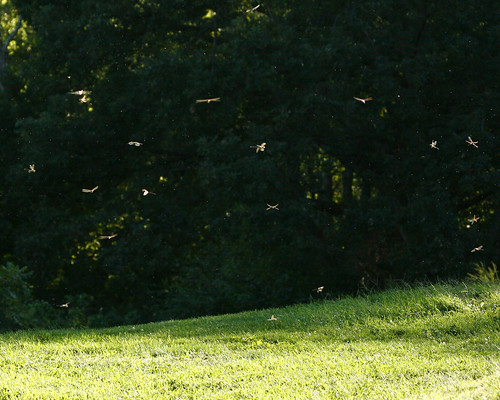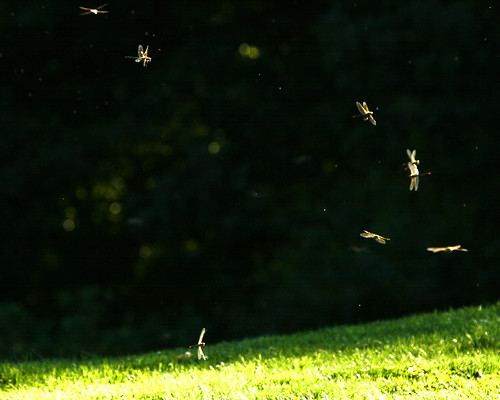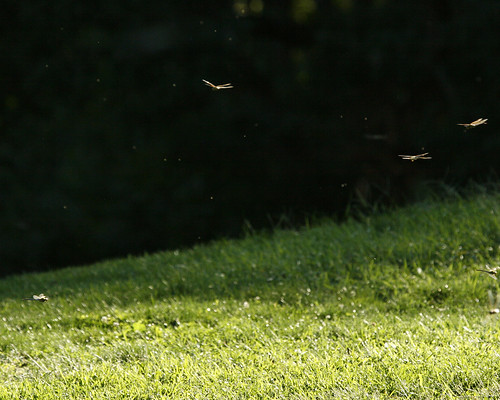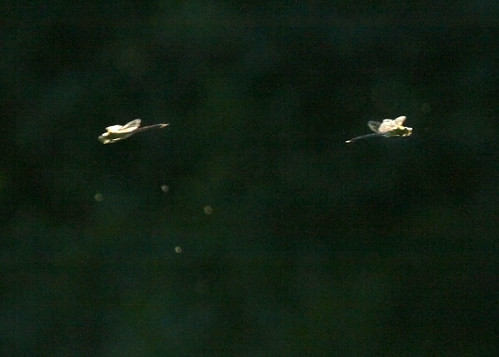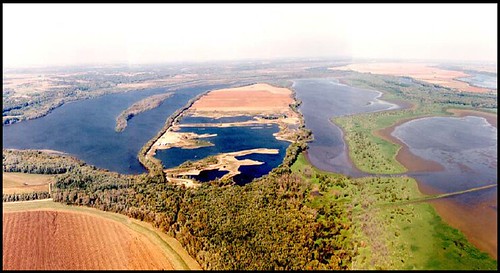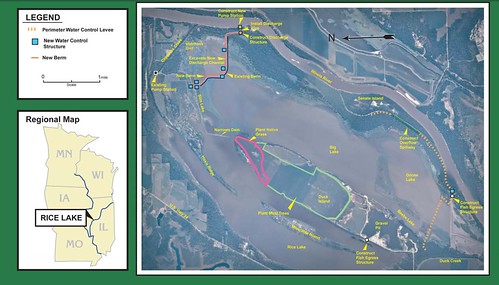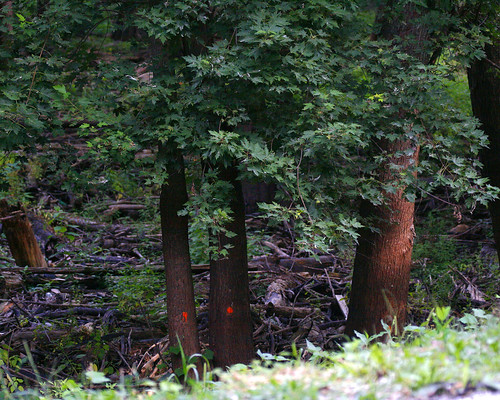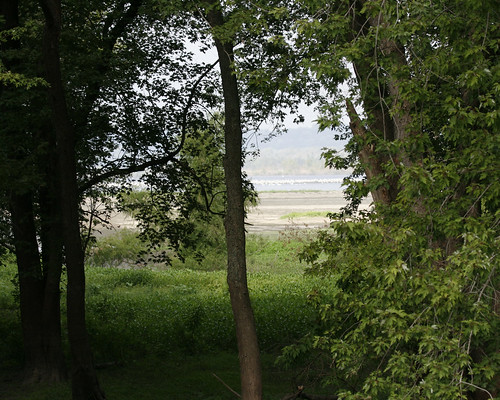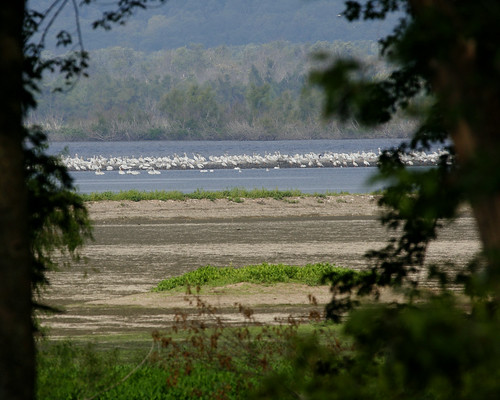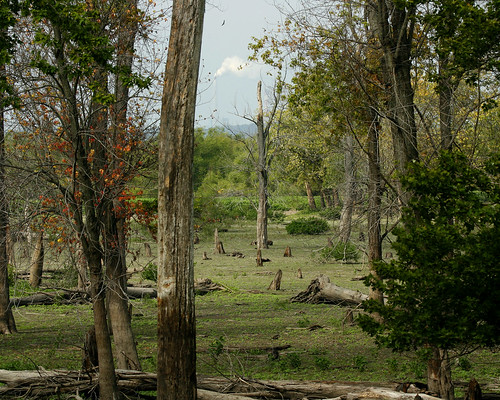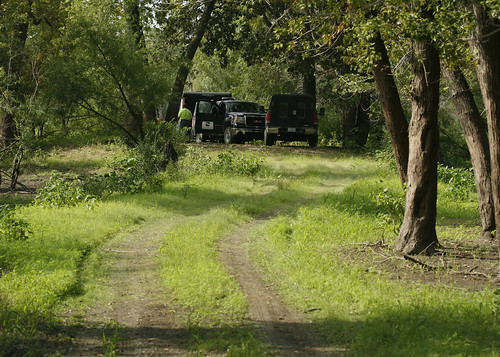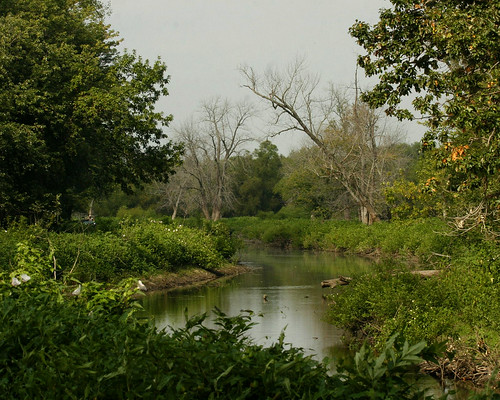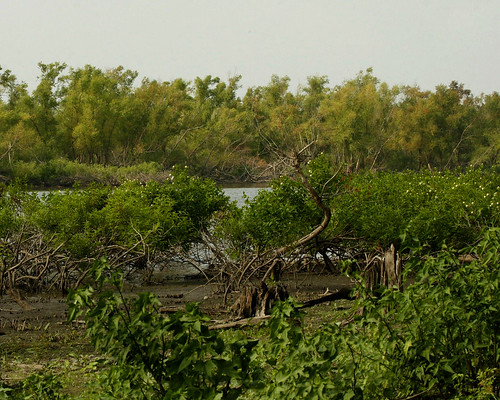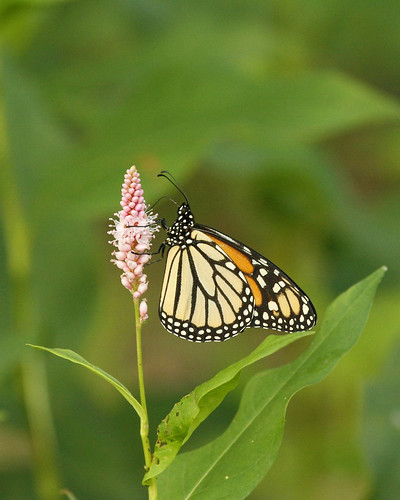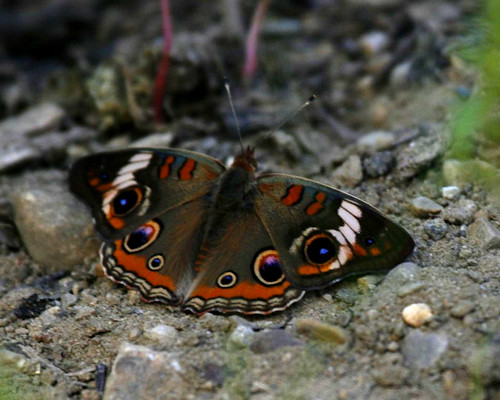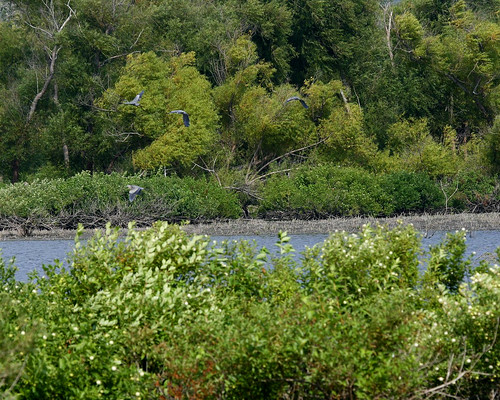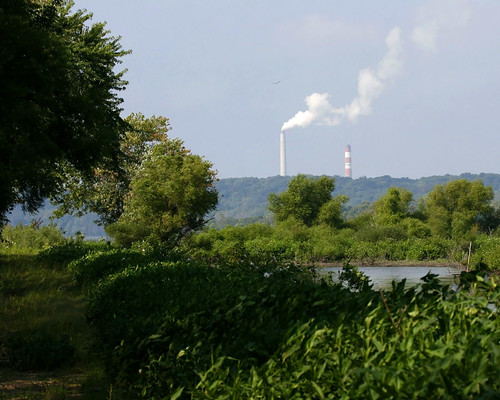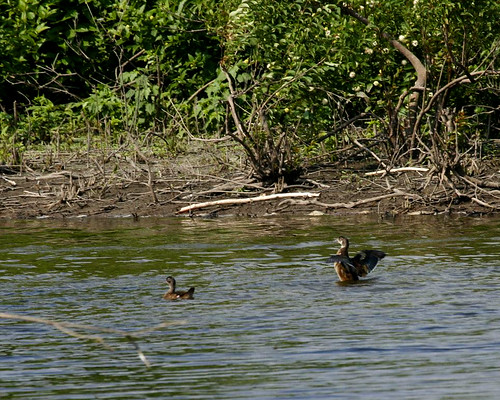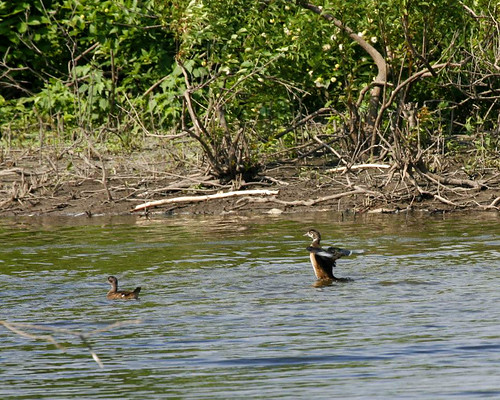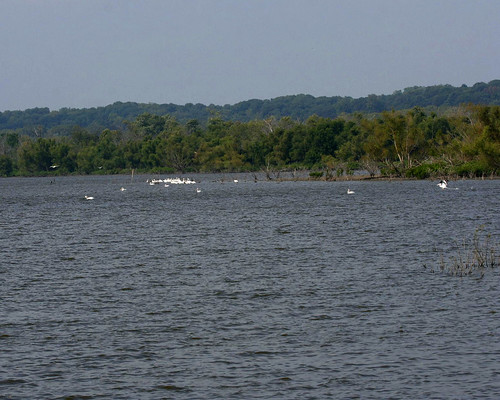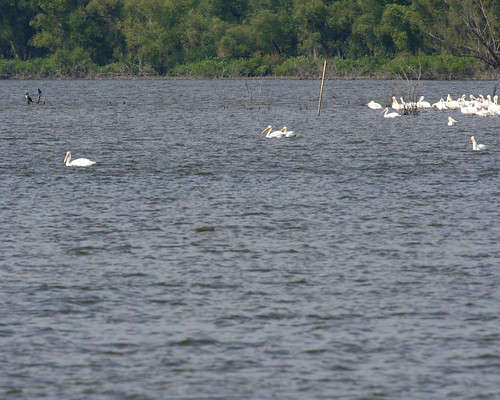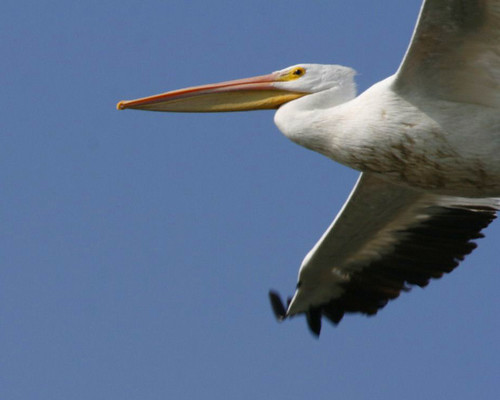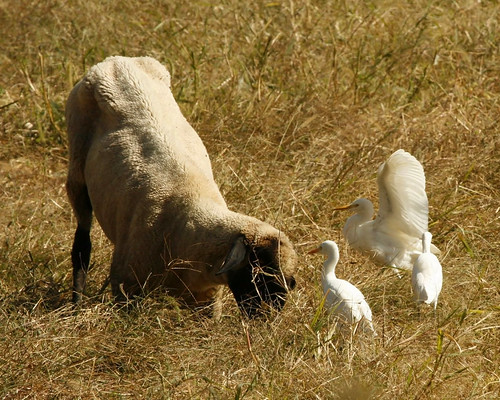

I headed on out to the path leading to the levee. The light was fantastic, with blue sky and billowing clouds. The wet prairie awaited. I took a photo of the prairie from the road, where I parked my car. I could see all the way to the northern levee. The palette of colors changing with the variuos habitats was subtle and vibrant in the morning light.
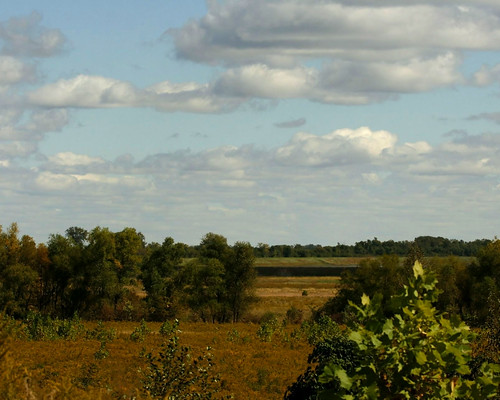
As I walked down the path, I looked back towards the bluff through a sea of Foxtail grass with the young trees planted by TNC poking their branches up through it. This is an affect of foreshortening caused by the 100mm lens, but it is a neat affect. The highway in front of the tree covered bluff rises behind the trees.
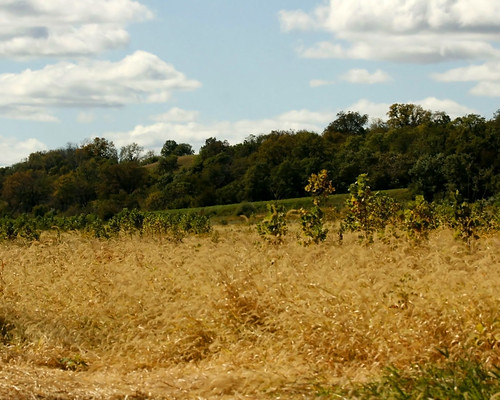
As I reach the small wetland that is forming along a former fence-row ditch, the dominant plant becomes smart weed, now past its prime. Trees left along the fence row provide a break in the prairie and wetland plants.
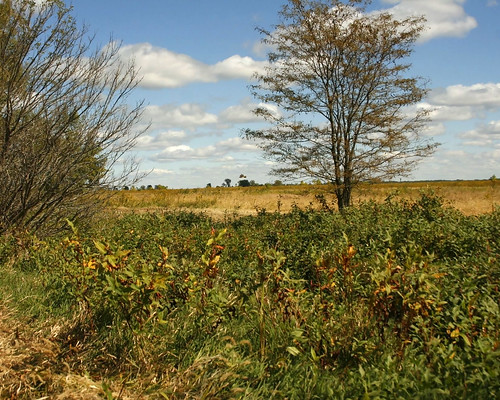
A pond is forming from the seemingly continuously flowing stream.
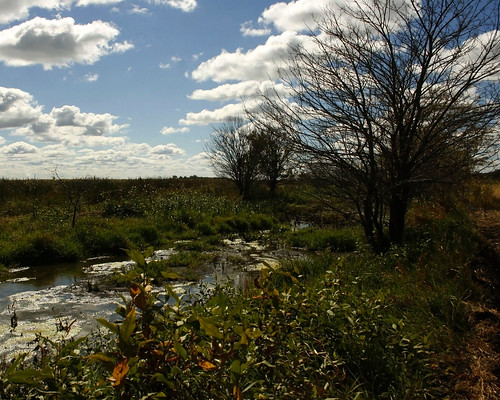
On the higher ground west of the newly forming wetland, Foxtail is the dominant grass, providing a wonderful expanse of golden grain.
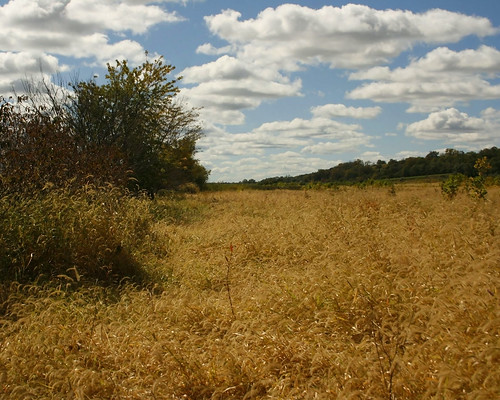
Amid the golden sea of grain, a lone Goldenrod stood proud and tall, a brave move of the Goldenrod into Foxtail habitat in the continuous game of plant succession.
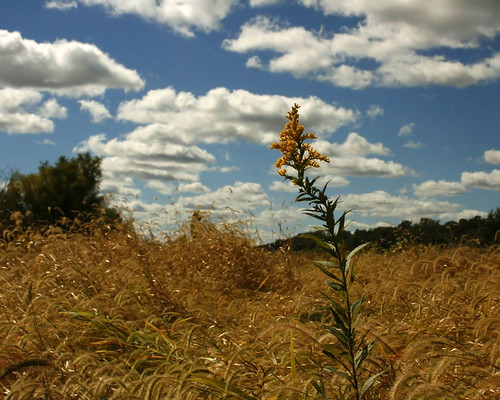
After leaving the path on Clark Road, I drove along the highway and stopped at the Wetland pull-off, one of several pull-offs that lead to former agricultural roads before TNC restored the land.
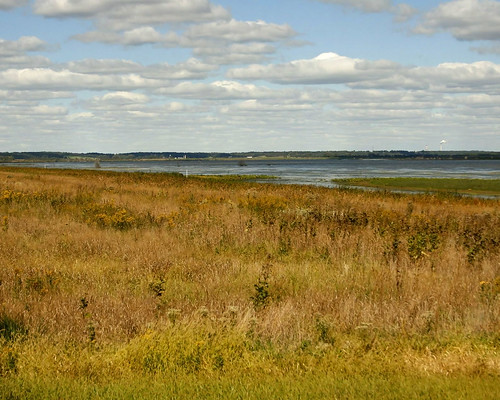
I also stopped at the Pump House Road pull-off, which was temporarily being used as a launch for fishing boats during construction of the new visitor center at the previous launch location.

I stopped at the pull-off leading to the former boat launch, which is now a construction zone, and turned to the north to take a photo of the trees that are being saved during the construction. These trees were part of the farm house and buildings during the hundred years the area was drained and farmed.
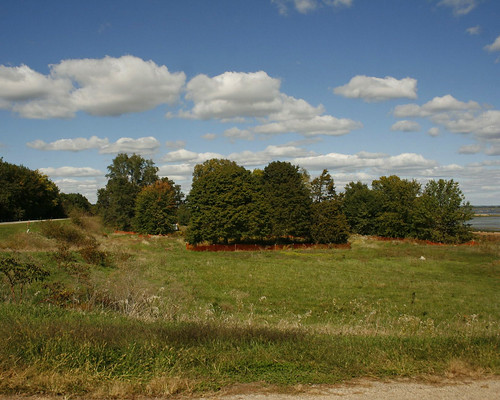
Looking south I could see all the way to Havana, and its giant cloud maker (the power plant).
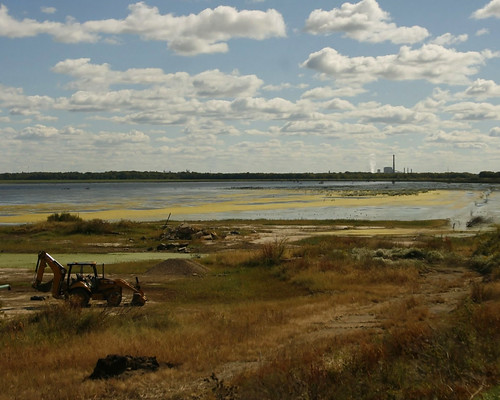
Looking east I could see the transformation taking place at the former boat launch.
